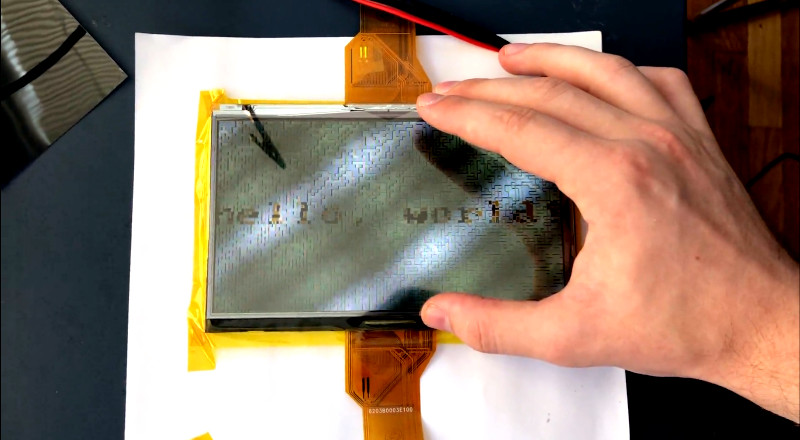Digital security is always a moving target, with no one device or system every being truly secure. Whether its cryptographic systems being compromised, software being hacked, or baked-in hardware vulnerabilities, it seems there is always a hole to be found. [Max Justicz] has a taste for such topics, and decided to explore the possibility of creating a secure communications device using a pair of LCDs.
In a traditional communications system, when a message is decrypted and the plaintext is displayed on screen, there’s a possibility that any other software running could capture the screen or memory state, and thus capture the secret data. To get around this, [Max]’s device uses a concept called visual cryptography. Two separate, independent systems with their own LCD each display a particular pattern. It is only when the two displays are combined together with the right filters that the message can be viewed by the user, thanks to the visual XOR effect generated by the polarized nature of LCDs.
The device as shown, working with both transparent OLEDs and traditional LCDs, is merely a proof of concept. [Max] envisions a device wherein each display is independently sourced, such that even if one is compromised, it doesn’t have the full message, and thus can’t compromise the system. [Max] also muses about the problem of side-channel attacks, and other factors to consider when trying to build a truly secure system.
We love a good discussion of cryptography and security around here; [John McMaster]’s talk on crypto ignition keys was a particular hit at Supercon last year. Video after the break.

















This is clever, even from the non cryptographic sense; basically turning a second LCD into the polarizer film…
I wonder how else this could be used.
Kinda reminds me of the color overlay LCDs used on b/w CRT oscilloscopes[?] way back when for higher resolution and faster drawing [and vector-drawing?] than an LCD alone.
Also, Max mentions a visual “OR” using checkerboard patterns; I’m also reminded of a teardown I saw [here?] of an old back-illuminated mechanical alphanumeric display using tiny movements of checkerboard-patterned sheet-metal. Oh yeah… https://hackaday.com/2020/04/07/bina-view-a-fascinating-mechanical-interference-display/
Really cool to see this.
New tv’s are coming where they use a LCD just for backlight and dimming while the screen is oled.
How effective would it actually be at defeating electromagnetic spying? (I’m going to guess very effective if some other part of the system doesn’t leak it first, since detecting the weak electromagnetic fields is very sensitive to noise to begin with and the encryption more or less adds a lot of noise.)
It is not working with transparent OLEDs. Read it. They only allow “or”. They are completely photon additive. They have no subtractive function like LCD. You have to add an extra cypher mask to achieve “xor”.
Sorry, I haven’t made an annoying critical comment all day was feeling all nitipicky.
You can do this with “or” based technology too. You loose some resolution, and contrast, but with the right pattern it works. Group your pixels in 2×2 squares. give each square a pattern of [1, 0;0, 1]. Each of those squares are now your “pixels”. invert the pixels at random. Copy the sheet and invert those “pixels” you want to be “on”. By overlaying the two sheets you will get either [1, 0; 0, 1] or [0, 1;1, 0] for those pixels you wanted to be “off” and [1, 1; 1, 1] for those you wanted to be “on”.
There was HaD post about this earlier, but sadly I cannot find it.
Just realized that the linked article actually goes over this in details too.
One potential problem is malleability: if one system knows a part of what is to be displayed, it can change the display in that area to whatever it wants.
I had an idea where you just use an LCD shutter with a simple LED display. Without the shutter, the LED display appears to show rapidly flickering gibberish. Hold the LCD shutter over it and the signal frames are selected from the noise frames, combining into readable information via POV. The LED and LCD can synchronise via infrared. The LCD can be worn like glasses so only you can see the secret info.